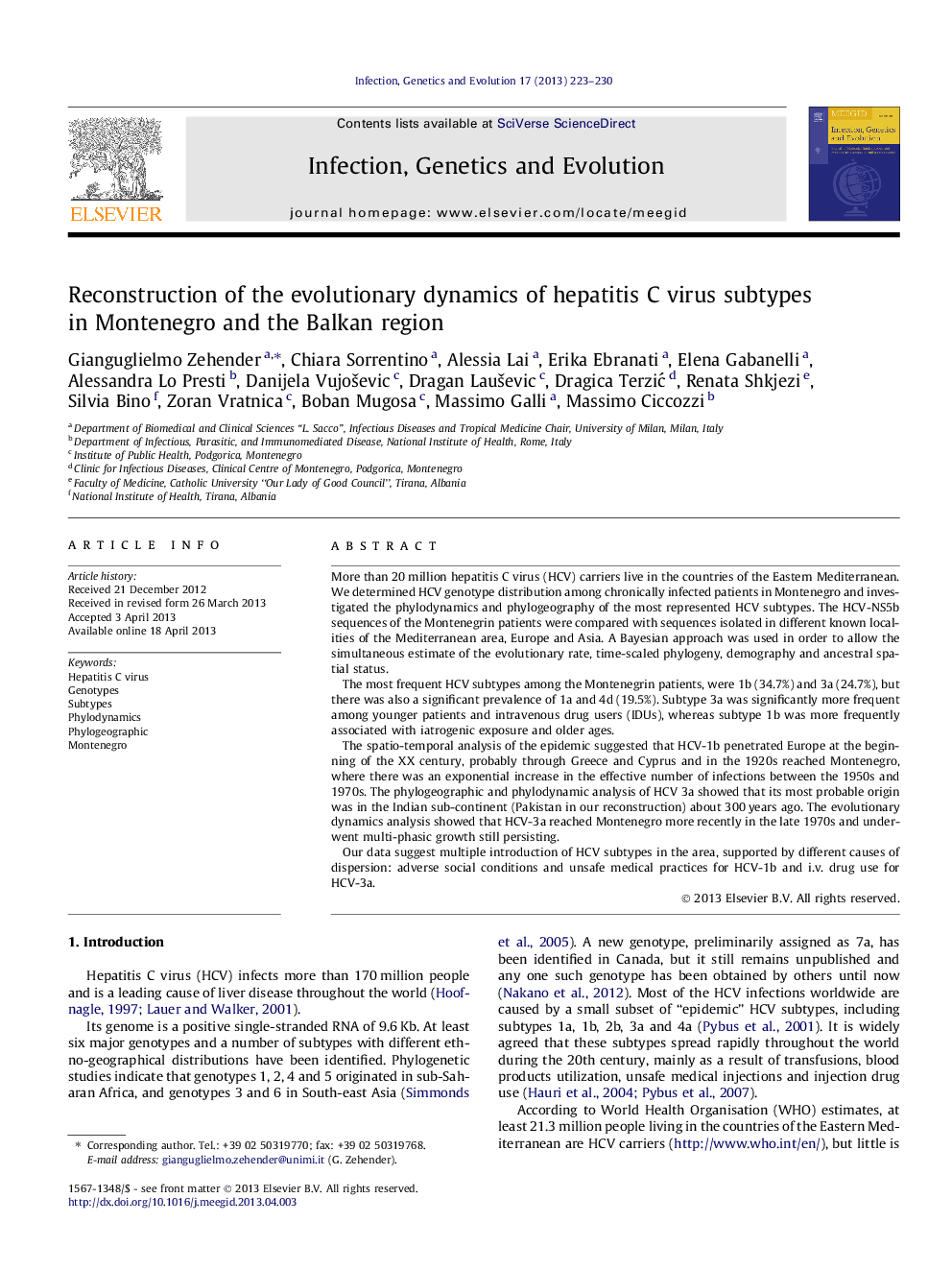| کد مقاله | کد نشریه | سال انتشار | مقاله انگلیسی | نسخه تمام متن |
|---|---|---|---|---|
| 5910395 | 1570186 | 2013 | 8 صفحه PDF | دانلود رایگان |

- Prevalence, phylodynamics and phylogeography of HCV subtypes in Montenegro.
- Most frequent HCV subtypes among Montenegrin patients were 1b (34.7%) and 3a (24.7%).
- HCV entered in Balkans in different times through different routes of transmission.
More than 20Â million hepatitis C virus (HCV) carriers live in the countries of the Eastern Mediterranean. We determined HCV genotype distribution among chronically infected patients in Montenegro and investigated the phylodynamics and phylogeography of the most represented HCV subtypes. The HCV-NS5b sequences of the Montenegrin patients were compared with sequences isolated in different known localities of the Mediterranean area, Europe and Asia. A Bayesian approach was used in order to allow the simultaneous estimate of the evolutionary rate, time-scaled phylogeny, demography and ancestral spatial status.The most frequent HCV subtypes among the Montenegrin patients, were 1b (34.7%) and 3a (24.7%), but there was also a significant prevalence of 1a and 4d (19.5%). Subtype 3a was significantly more frequent among younger patients and intravenous drug users (IDUs), whereas subtype 1b was more frequently associated with iatrogenic exposure and older ages.The spatio-temporal analysis of the epidemic suggested that HCV-1b penetrated Europe at the beginning of the XX century, probably through Greece and Cyprus and in the 1920s reached Montenegro, where there was an exponential increase in the effective number of infections between the 1950s and 1970s. The phylogeographic and phylodynamic analysis of HCV 3a showed that its most probable origin was in the Indian sub-continent (Pakistan in our reconstruction) about 300Â years ago. The evolutionary dynamics analysis showed that HCV-3a reached Montenegro more recently in the late 1970s and underwent multi-phasic growth still persisting.Our data suggest multiple introduction of HCV subtypes in the area, supported by different causes of dispersion: adverse social conditions and unsafe medical practices for HCV-1b and i.v. drug use for HCV-3a.
Journal: Infection, Genetics and Evolution - Volume 17, July 2013, Pages 223-230